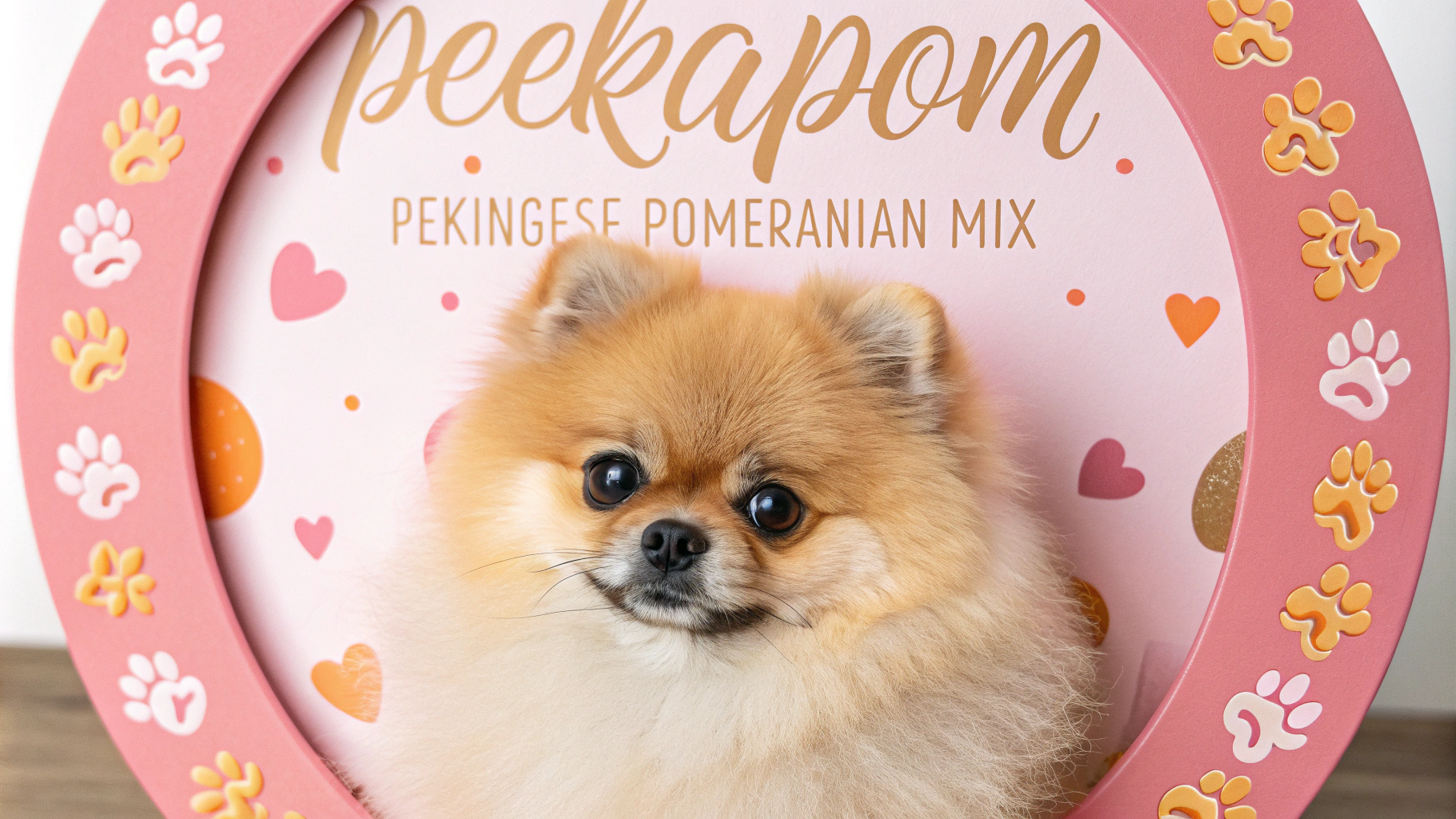The Saint Berdoodle is a large, gentle mixed breed resulting from crossing a Saint Bernard with a Standard Poodle. This designer dog combines the intelligence and low-shedding coat of the Poodle with the size and loving nature of the Saint Bernard. Saint Berdoodles are known for their friendly disposition, making them excellent family companions and therapy dogs. While they can be quite large, they are generally calm and patient, especially when properly trained and socialized.
Key Facts
- Size: Large to Giant (24-30 inches tall, 110-200 pounds)
- Lifespan: 8-12 years
- Coat: Medium to long, wavy or curly, low to moderate shedding
- Colors: Various combinations of white, black, brown, and red
- Temperament: Gentle, friendly, intelligent, and patient
- Exercise needs: Moderate
- Trainability: Generally easy to train, but can be stubborn
- Good with children: Yes, excellent family dogs
- Good with other pets: Yes, generally good with proper socialization
Character Traits
Saint Berdoodles are known for their gentle and loving nature, often inheriting the best traits from both parent breeds. They are typically patient and good-natured, making them excellent companions for families with children. These dogs are intelligent and eager to please, which can make training easier, although they may inherit some stubbornness from the Saint Bernard side.
Despite their large size, Saint Berdoodles are often described as “gentle giants.” They tend to be calm and laid-back indoors but can be playful and energetic when engaged in activities. Their friendly disposition extends to both humans and other animals, making them good candidates for multi-pet households when properly socialized.
Saint Berdoodles often display a strong desire to be close to their family members and may develop a protective instinct, although they are generally not aggressive. They can be sensitive to their owners’ emotions and may act as comforters during times of stress. Their intelligence and empathy make them excellent therapy dogs in many cases.
History & Origins
The Saint Berdoodle is a relatively new designer dog breed, likely originating in the late 20th or early 21st century as part of the growing trend of Poodle crossbreeds. While the exact origins are not well-documented, the breed was likely developed to combine the desirable traits of both parent breeds: the Saint Bernard and the Standard Poodle.
Saint Bernards have a long history as rescue dogs in the Swiss Alps, known for their strength, endurance, and ability to navigate through snow. Poodles, originally bred as water retrievers in Germany, are renowned for their intelligence and hypoallergenic coats. The combination of these two breeds aims to produce a large, intelligent dog with a potentially hypoallergenic coat and a gentle temperament.
As with many designer breeds, the Saint Berdoodle is not recognized by major kennel clubs like the American Kennel Club (AKC) or the United Kennel Club (UKC). However, they are gaining popularity among dog enthusiasts who appreciate their unique blend of characteristics. The breed continues to evolve, with breeders working to establish more consistent traits and standards.
Health Concerns
Saint Berdoodles, like many mixed breeds, can inherit health issues from both parent breeds. Common concerns include:
- Hip and Elbow Dysplasia: Inherited from the Saint Bernard side, these joint problems can cause pain and mobility issues.
- Bloat (Gastric Dilatation-Volvulus): A potentially life-threatening condition where the stomach fills with gas and twists on itself.
- Eye Problems: Including cataracts, progressive retinal atrophy, and entropion.
- Addison’s Disease: An endocrine disorder more common in Poodles.
- Skin Issues: Including allergies and hot spots.
Regular veterinary check-ups, a balanced diet, and proper exercise can help mitigate some of these risks. It’s also crucial to obtain your Saint Berdoodle from a reputable breeder who conducts health screenings on parent dogs.
Exercise Needs
Saint Berdoodles have moderate to high exercise needs, requiring daily physical activity to maintain their health and happiness. Their exercise requirements can vary based on the size and energy level inherited from their parent breeds.
- Daily Walks: Aim for at least 30-60 minutes of walking or jogging per day, split into two sessions if possible.
- Playtime: Engage in interactive play sessions, such as fetch or tug-of-war, to provide mental stimulation.
- Swimming: Many Saint Berdoodles enjoy water activities, which can be an excellent low-impact exercise.
- Mental Stimulation: Incorporate puzzle toys and training sessions to keep their minds active.
It’s important to note that overexertion, especially in hot weather, should be avoided due to their potential for heat sensitivity inherited from the Saint Bernard side. Always provide plenty of fresh water and monitor your dog for signs of fatigue during exercise.
Space Requirements
Saint Berdoodles are large dogs that require ample living space to thrive. While they can adapt to various living situations, certain conditions are ideal for their size and energy level:
- Home Size: A spacious house with a large yard is optimal, providing room for the dog to move freely both indoors and outdoors.
- Apartment Living: While possible, it’s challenging and requires a commitment to frequent outdoor exercise and activities.
- Outdoor Access: A fenced yard allows for safe exploration and play, but should not be a substitute for walks and human interaction.
- Indoor Space: Sufficient room for a large dog bed, crate (if used), and areas to stretch out comfortably.
Regardless of living space, Saint Berdoodles thrive on human companionship and should not be left alone for extended periods. If space is limited, owners must be prepared to provide ample exercise opportunities outside the home.
Nutrition & Feeding
Proper nutrition is crucial for the health and well-being of Saint Berdoodles, considering their large size and potential for certain health issues. Here are key points to consider:
- High-Quality Dog Food: Choose a premium dog food formulated for large breeds, with balanced protein, fat, and carbohydrates.
- Portion Control: Follow feeding guidelines based on age, weight, and activity level to prevent obesity, which can exacerbate joint issues.
- Feeding Schedule: Typically, 2-3 meals per day for adults, with puppies requiring more frequent feeding.
- Slow-Feeding Methods: Use slow-feed bowls or puzzle feeders to prevent rapid eating and reduce the risk of bloat.
- Supplements: Consider joint supplements like glucosamine and chondroitin, especially as the dog ages, but consult with a veterinarian first.
Always provide fresh, clean water and monitor your Saint Berdoodle’s weight and body condition regularly. Adjust food intake as needed to maintain a healthy weight, and consult with a veterinarian for personalized nutritional advice, especially if your dog has specific health concerns.
Grooming Tips
Saint Berdoodles require regular grooming to maintain their coat and overall health. The frequency and intensity of grooming depend on which parent breed’s coat they inherit more closely. Generally, these dogs need brushing 2-3 times a week, with daily brushing during shedding seasons. Key grooming tasks include:
- Brushing to prevent matting and tangles
- Regular bathing every 4-6 weeks
- Nail trimming every 2-3 weeks
- Ear cleaning to prevent infections
- Teeth brushing 2-3 times a week
Professional grooming every 6-8 weeks is recommended for maintaining coat health and managing shedding. Pay special attention to the areas around the ears, paws, and tail, as these are prone to matting. If the coat is more Poodle-like, consider professional clipping every 6-8 weeks to maintain a manageable length. Regular grooming sessions also provide an opportunity to check for any skin issues, lumps, or abnormalities.
Training Approach
Saint Berdoodles are intelligent and eager to please, making them generally trainable. However, they can also be stubborn at times, requiring patience and consistency in training. Effective training approaches include:
- Positive reinforcement techniques
- Early socialization with people and other animals
- Consistent obedience training
- Mental stimulation through puzzle toys and games
Start training early to establish good habits and prevent the development of unwanted behaviors. Focus on basic commands like sit, stay, come, and heel. Due to their large size, leash training is crucial to prevent pulling. Socialization is essential to ensure they’re comfortable in various situations and with different people and animals. Remember that Saint Berdoodles can be sensitive, so use gentle, reward-based methods and avoid harsh corrections. Patience and persistence are key, as these dogs may take longer to mature fully compared to smaller breeds.












